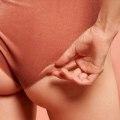At-home waxing can be an intimidating experience, but it doesn't have to be! With the right preparation and a few simple steps, you can have a successful and enjoyable at-home waxing experience. From the equipment you need to the techniques that will help you get the best results, we've got you covered. Read on to learn more about setting up for at-home waxing. At-home waxing can be a great way to save money, time, and hassle on hair removal. But before getting started, there are a few things to consider.
One of the most important is choosing the right wax type for the area being waxed. Hard wax is best for small, delicate areas such as the face or bikini line, while soft wax is better for larger areas like the legs. Pre- and post-wax treatments, strips, and wax are also necessary to ensure safe and effective results. When setting up for at-home waxing, it's important to prepare the area beforehand.
Trimming the hair to 1/4 inch long and exfoliating are key steps to ensure that the wax will adhere properly and the hair can be removed more easily. For soft wax, it needs to be heated up to a comfortable temperature before use. Hard wax is already in a softer state when purchased so it doesn't need to be heated. Once everything is set up, apply the wax in the direction of the hair growth and press a strip over the top of it.
Let it cool until it's slightly tacky and then remove the strip by holding the skin taut and pulling against the direction of the hair growth. After removing all of the unwanted hair, use pre- or post-wax treatments on the area to help soothe any irritation. When it comes to tips and advice for successful at-home waxing, it's important to keep in mind that patience and practice are key. Start with small areas and work your way up to larger ones as you become more confident in your technique. Additionally, make sure to use clean supplies and tools each time you wax, discard used strips after each use, and never double dip into a pot of wax. At-home waxing can be an affordable and convenient way to remove unwanted body hair.
However, it's important to take safety precautions and understand how to properly set up for at-home waxing in order to get the best results. By following these steps and taking into account the tips mentioned above, you'll be well on your way to achieving smooth, hair-free skin.
How To Do At-Home Waxing Safely and Effectively
At-home waxing can be a great way to save money, time, and hassle on hair removal. But to do it safely and effectively, there are a few steps you need to take. Here's a step-by-step guide to setting up for at-home waxing.Step 1: Prepare the Area
Before you begin waxing, it's important to prepare the area by trimming or exfoliating the skin.This will help the wax adhere more easily and reduce the risk of skin irritation or infections.
Step 2: Heat Up the Wax
Before you start, make sure you have everything you need to heat up the wax. You can use a wax warmer or a double boiler to heat up the wax until it reaches a comfortable temperature.Step 3: Apply the Wax
Once the wax is ready, you can start applying it. Make sure you apply it in the direction of hair growth and spread it in a thin layer. You can use a wooden or metal applicator for this.Step 4: Remove the Strip
Once the wax has cooled, you can then remove the strip.Make sure you pull it off in one swift motion, in the opposite direction of hair growth. This will help reduce pain and irritation.
Step 5: Clean Up
After waxing, it's important to clean up any excess wax with a damp cloth or paper towel. This will help prevent skin irritation and infection.The Supplies and Tools You Need for At-Home Waxing
At-home waxing can be a great way to save money, time, and hassle on hair removal. But before you get started, it’s important to make sure you have the right supplies and tools.The type of wax you use depends on the area of the body you’re waxing—hard wax is best for smaller, sensitive areas like the face, while soft wax is better for larger areas like the legs and arms. Other necessary supplies include pre and post wax treatments, strips, and applicators.
Hard Wax
– Hard wax is ideal for small, delicate areas such as the face, underarms, and bikini line. It’s applied in thin layers and hardens as it cools, allowing it to be peeled off without the use of strips. Hard wax is more expensive than soft wax but is gentler on the skin.Soft Wax
– Soft wax is a great choice for larger areas such as the legs and arms.It’s applied with a wooden or plastic spatula and removed with strips. Soft wax is less expensive than hard wax but can be more painful to use.
Pre-Wax Treatments
– Pre-wax treatments help to reduce discomfort and make it easier to remove hair from the root. These treatments typically contain oils and emollients that help to protect the skin from irritation.Post-Wax Treatments
– Post-wax treatments help to soothe the skin and reduce inflammation. These products are usually cooling gels or creams that contain aloe vera or other ingredients that help to reduce redness and pain.Strips
– Strips are used to remove soft wax after it has been applied.They come in various sizes and shapes so you can choose the one that best fits your needs.
Applicators
– Applicators come in various sizes and shapes and are used to apply hard and soft wax. They’re usually made of wood or plastic and come with a handle for easy application. At-home waxing is a great way to save time and money on hair removal. With the right supplies, such as wax, strips, and cleaning materials, and the knowledge of how to do it safely and effectively, anyone can set up for at-home waxing. To ensure safety, it is important to read instructions carefully before attempting at-home waxing, as well as use correct techniques.Following these steps can help you get the most out of your at-home waxing experience!.


